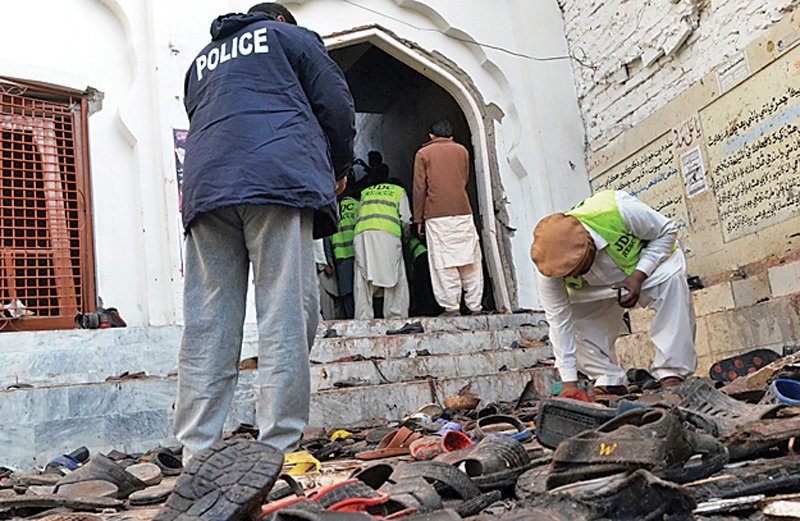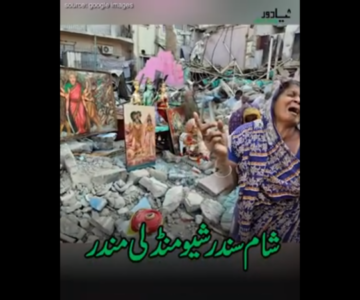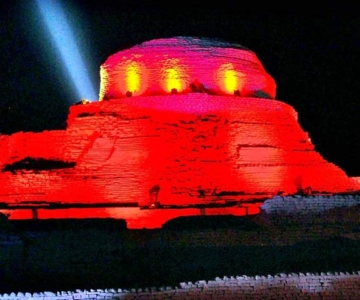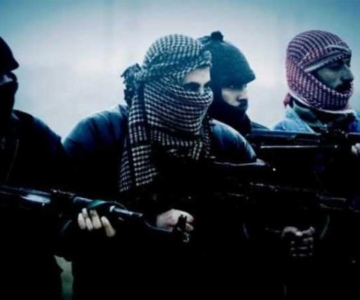The recent carnage in Shikarpur has come as a shock for many Pakistanis.
Rural Sindh, invisible from the view of Punjab and Karachi obsessed media rarely makes news unless there is a major political rally or the images of dying children that can enable some quick political point scoring.
For the past decade, the land of Sufis known for its tolerant and plural ways has been the latest laboratory of Pakistan’s sectarian jihadists. Along the major highways, the mushrooming of seminaries is evident and the recent build up of hate crimes testifies to the ideological grafting that is underway. The Punjab, Khyber-Pakhtunkhwa and Karachi have since long succumbed to the madrassa-welfare complex that in part responds to state failure as well as fits into the security architecture. The largely secular Sindh and Balochistan provinces are now under attack to balance what is known in the official-speak as inter-provincial harmony.
Balochistan has seen the worst incidents of sectarian terror in the past few years. Hazara settlements being bombarded with explosives hidden in water tankers, youth spaces such as snooker clubs attacked and young women going to college targeted, are incidents all too well known. But forgotten as they happen away from the centres of power. The sectarian outfits nourished in the populous plains of Punjab have branched out in Balochistan for a variety of reasons. The foremost reason is to challenge the nationalist movement with sectarian-religious passions. Media reports have also indicated that the sectarian militants may have infiltrated the ranks of some separatists but all of this is speculative thus far. Reporting from and on Balochistan is as perilous as covering Syria or Iraq these days. According to Reporters Without Border, Khuzdar is one of the most dangerous places in the world for journalists. You are bound to get on the wrong side of major players: the security agencies and the militants.
The story of Sindh is somewhat different even though it is also a case of social re-engineering and filling in the voids left by a weak state. From Southern Punjab and Balochistan the militant networks have access to various parts of the province and the civil-military authorities are not doing much other than periodically paying lip-service which people have stopped taking seriously.
So the violent extremists in this case the Jandullah group did not land suddenly in Shikarpur to traumatize the faithful in an Imambargah. This was a more lethal expression of a growing ideology. In February 2011, the Ghulam Shah Ghazi shrine was bombed in Shikarpur which killed four people and injured more than 27 devotees. A few months later, National People’s Party candidate Mohammad Ibrahim Jatoi survived a suicide attack also in Shikarpur district. Later in the year, 10 people from the Sunni and Shia communities were injured during a sectarian standoff in Khairpur.
In February 2013, the convey of spiritual leader Syed Hussain Shah Qambar was attacked with a remote-control bomb in the Ahmed Deen Brohi area of Jacobabad district. He escaped unhurt, but his grandson was killed and eight other people were injured. In the same month, three people were killed and more than 27 others injured in a bomb attack at the Sufi shrine Dargah Ghulam Shah Ghazi in the village Maari near Shikarpur. Perhaps the most brazen attack of the same year was the assault on ISI offices in Sukkur that were bombed at the time of Iftaar. In that attack, nine people were killed. The Tehrik-e-Taliban Pakistan (TTP) claimed responsibility. Later in the year, in November 2013, a cleric died and 15 people were injured during a sectarian clash in Shahdadkot.
Last year was even more brazen. In January 2014, TTP claimed an attack that killed six people near the Sufi shrine of Ayub Shah Bukhari in Gulshan-e-Maymar area of Gadap Town in Karachi. On March 15, a mob torched a Hindu temple after allegation of desecration of a copy of holy Quran by a youth in Larkana. In November, the Secretary General JUI-F Sindh Dr Khalid Mahmood Soomro was assassinated in Sukkur. Also in November, a Hindu temple was vandalized in Tando Mohammad Khan district. A deity and religious books in the temple were burnt to ashes.
For the past few years, The Friday Times (TFT) where I edit and commission news stories has reported on how the militant groups are gaining ground in interior Sindh. Other than TFT or a few other publications, the spread of militancy in Sindh has not been widely covered by the media. News stories such as forced conversions and attack on Hindus in Sindh have hit the press but the scale of this menace is far greater as hundreds of Hindu girls have reportedly been converted with the zeal to purify the secular Sindh.
Ostensibly banned jihadi organisations such as Sipah-e-Sahaba Pakistan, Jaish-e-Muhammad and Lashkar-e-Jhangvi affiliated with the defunct TTP and receding al-Qaeda have set up seminaries throughout the province. Urban public opinion in Karachi and Punjab views it through the simplistic lens of the landlord problem and the incompetence of the People’s Party provincial government. , in reality, it is a far deeper phenomenon than it appears.
Militants in Sindh have targeted political workers, Sindhi nationalists and Sufis. The so-called banned outfits have been holding public rallies and showing their strength. Noted security analyst of Pakistan, Dr Ayesha Siddiqa, a lone voice in commenting on these developments, holds that Sindhi nationalism is one of the key targets of these extremist movements. Siddiqa wrote last year that during Musharraf’s military rule, infrastructure development took place as well as induction of over 80000 Sindhis into the military. But this infrastructure roads, development etc. also provided ease of movement for the jihadi militant organizations. She opined that militancy was Sindh’s future and it might just wipe out the centuries old pluralism of the region giving way to the extension of a hybrid-theocracy that already exists in other provinces.
Sindh Police is responsible for maintaining general law and order in the province. Civilian and military intelligence agencies, and various law enforcement departments assist it. However, there is a problem of recruitment on political grounds and the usual issues of politicization of its functions. Under-staffing, inadequate training especially for counter-terrorism mar its overall performance. More importantly, this is where the military will have to step in and view the brewing situation in light of the recently announced National Action Plan against terrorism.
This creeping militancy in Sindh is a threat for its key political parties i.e. PPP and MQM as they both are viewed as liberal. But the two parties, instead of developing a sound governance framework, have been at loggerheads pressurizing each other for bargains and short-term political gains. They have certainly missed the big picture. Sindh needs better governance in the form of local governments, police reform and intelligence coordination. More importantly, the perception of rampant corruption needs to go away. With a dwindling faith in state, Sindhis are losing faith in the capacity of the democratic system. With nearly half or over 4.2 million kids out of schools, abysmal social services the political governance is losing its relevance. The radicals, with the support of elements within the permanent state, are pushing their agenda through force. After the Shikarpur tragedy, the emergency response was dismal to the point of being a leaf out of a Shakespearean tragedy where poor victims of terror could not even get timely medical attention.
With Karachi being a hotbed of militant networks and Sindh gradually occupied by hate-preaching networks, the death of Pakistan’s lively secular culture is on the cards. Where once Sarmast, Bhitai and Lal Shahbaz were icons of plural Sindhi identity, an insidious imported sectarian ideology is taking root. This is surely an extension of the unfortunate state project since 1980s. Let’s hope the PPP and MQM stand up against it. Otherwise they should be ready for the apocalypse.
Image Credits: The Express Tribune



